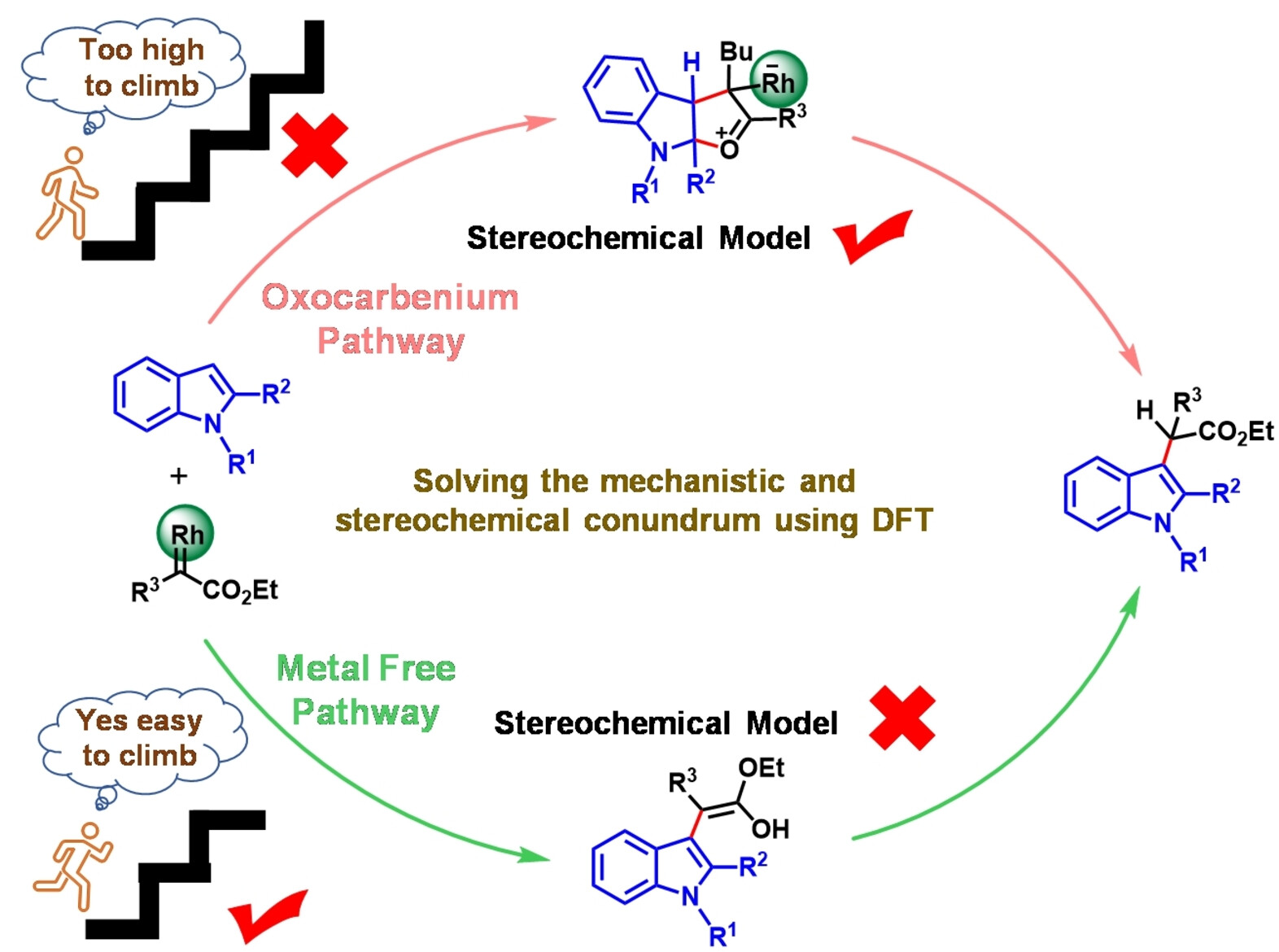The mechanism of Rh2(S-NTTL)4 catalyzed carbene insertion into C(3)-H of indole is investigated using DFT methods. Since the commonly accepted enol mechanism cannot account for enantioinduction, a concerted oxocarbenium pathway was proposed in an earlier work using a model catalyst. However, after considering the full catalytic system, this study finds that akin to other reactions, here, too, the enol pathway is of lower energy, which now naturally raises a conundrum regarding the mode of chiral induction. Herein, a new water promoted mechanistic pathway involving a metal-associated enol intermediate hydrogen bonding and stereochemical model are proposed to solve this puzzle. It is shown how the catalyst bowl-shaped structure along with substrate-catalyst binding is crucial for achieving high levels of enantioselectivity. A stereodetermining water-assisted proton transfer is proposed and confirmed through deuterium-labeling experiments. The water molecules are held together by H-bonding interactions with the carboxylate ligands that is reminiscent of enzyme catalysis. Although several previous studies have aimed at understanding the mechanism of metal catalyzed carbene insertion reactions, the origin of high stereoinduction especially with chiral metal complexes remains unclear, and till date there is no transition state model that can explain the high enantioselectivity with such chiral Rh complexes. The metal-associated enol pathway is currently underrepresented in catalytic cycles and may play a crucial role in catalyst design. Since the enol pathway is commonly adopted in other metal-catalyzed X-H insertion reactions involving a diazoester, the presented results are not specific to the current reaction. Therefore, this study could provide the direction for achieving high levels of enantioselectivity which is otherwise difficult to achieve with a single metal catalyst. Acquitting enol of all charges: The reaction mechanism and stereoselectivity of a Rh(II) catalyzed indole alkylation reaction with in situ generated carbenes are investigated. The reaction proceeds via a novel metal-associated enol pathway and not via a previously reported metal-free/oxocarbenium route.
